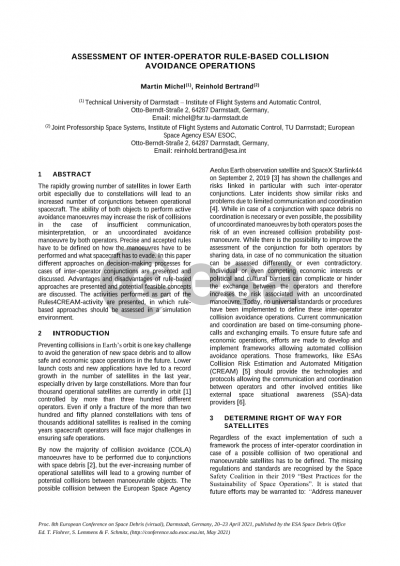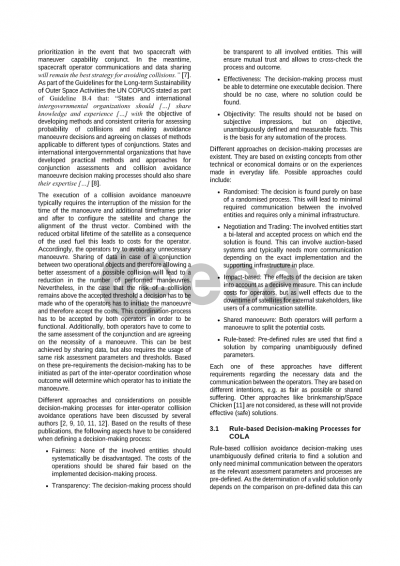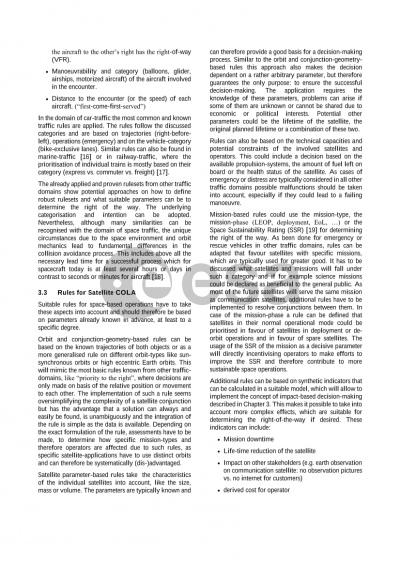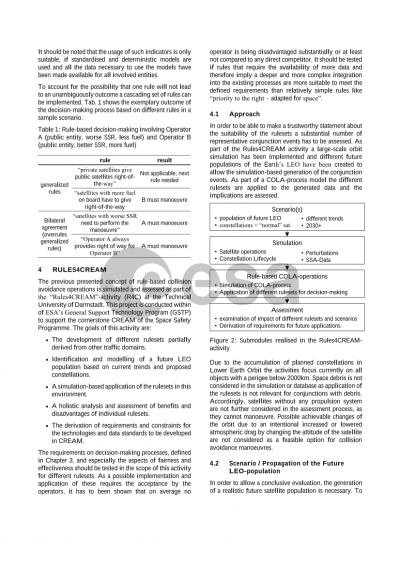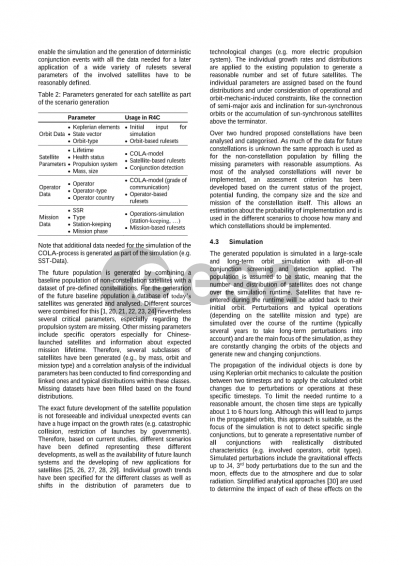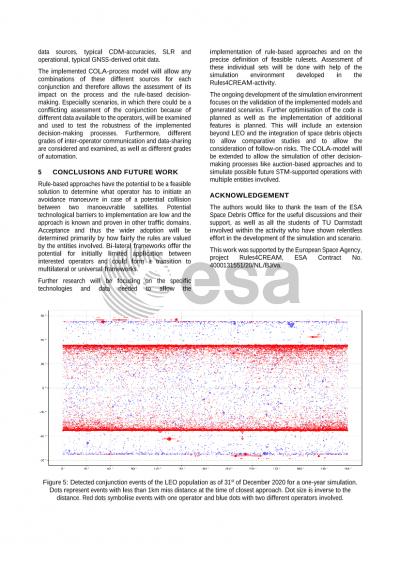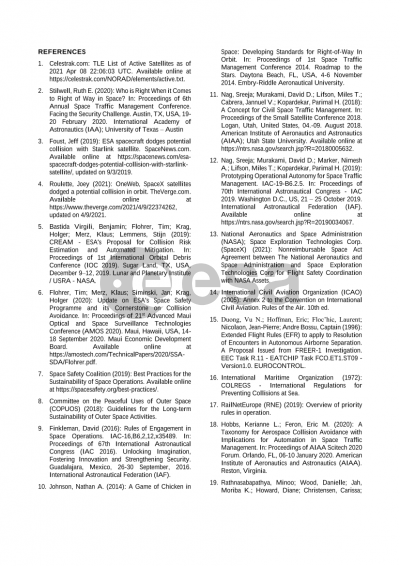Document details
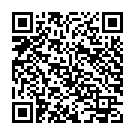
Abstract
The rapidly growing number of satellites in lower earth orbit especially due to constellations will lead to an increased number of conjunctions between operational spacecraft. The ability of both objects to perform active collision avoidance maneuvers allows for greater flexibility in performing these, but may also increase the risk of collisions in the case of insufficient communication, misinterpretation or an uncoordinated avoidance maneuver by both operators. Therefore, unlike conjunctions involving space debris, those collision avoidance operations will need a coordinated action between two satellite-operators. As mentioned by many authors, suitable inter-operator processes can be implemented as part of a future Space Traffic Management (STM) framework. Regardless of the exact implementation of such an STM-framework, precise and accepted rules have to be defined on how the maneuvers have to be performed and especially what spacecraft has to evade, as this has direct impacts on the mission and therefore financial consequences for operators. The implementation of such rules will allow the application of automated processes, which are essential to allow the efficient handling of the ever-growing number of conjunctions.
Within the framework of ESA’s General Support Technology Program (GSTP) different evasion rules and the implications of their application are examined in the “Rules4CREAM” de-risking activity at the Technical University of Darmstadt to support the cornerstone CREAM of the Space Safety Programme. Therefore different set of rules were defined, based on various parameters like the conjunction geometry, the mission type or the fuel left on board of the spacecraft. For the generation of a representative number and distribution of conjunctions, a large-scale orbit-simulation is implemented, considering typical satellite operations (e.g. deployment, de-orbit, station-keeping), perturbations as well as the availability and precision of orbit-data for the operators. To enable an efficient conjunction detection for several thousand objects over a long time-span customized algorithms are implemented. Different future scenarios are modelled and simulated, based on current and expected trends in growth and distribution of the satellite population (e.g. constellations; electric propulsion) and a future Space Surveillance Network (SSN). Different implementation grades of a possible STM framework and inter-operator communication are considered in the simulation.
Based on the generated conjunctions each of the defined rule-sets is analyzed regarding their applicability and their implications. Models to calculate the expected lifetime reduction due to fuel loss and mission downtime for each satellite due to the execution of an avoidance maneuver are implemented, which allows to calculate consequences for single operators or whole classes of satellites. The effects of different scenario-parameters, for example the total number and distribution of different satellite-classes and the existence of a shared catalogue is examined. The goal of the project is to identify suitable rule-sets and defining necessary requirements and relevant constraints for future inter-operator processes. The technical approach and results are presented in this paper.
Preview
